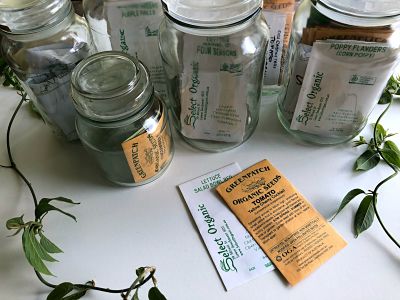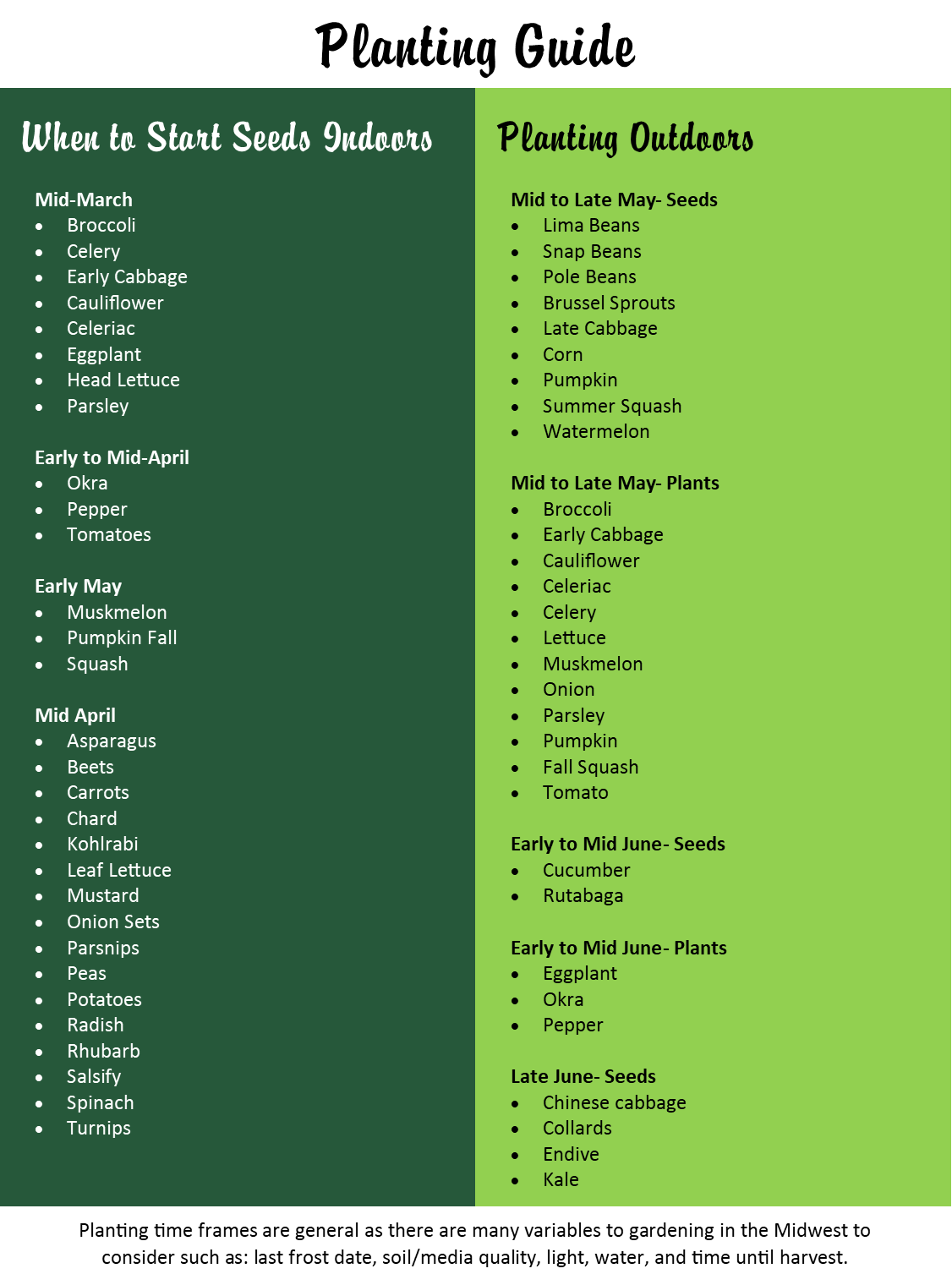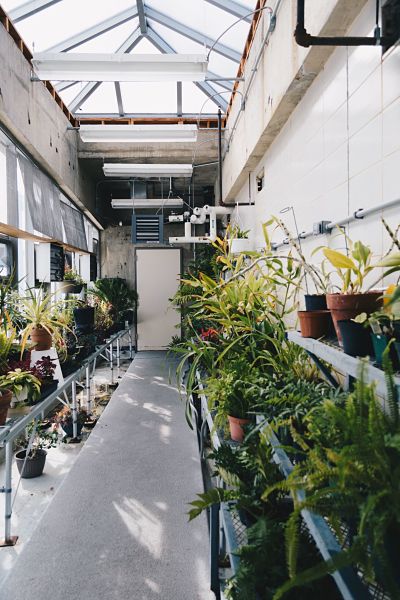There are plenty folklore and even family traditions of when to start seeds. UW-Extension provides a time frame of when to start seeds indoors or out, as well as when to transplant the plants (UW-Extension, 2008).
General information on starting seeds
(The Old Farmer’s Almanac, 2018)
- Fill clean containers with a moistened potting mix made for seedlings. Soilless peat moss mixed with equal parts vermiculite and perlite holds enough water and allows oxygen flow. Do not use regular potting soil, as it may not be fine enough for seeds to root through properly.
- Plant seeds according to the seed packet. Most seeds can simply be gently pressed into the mixture; the eraser end of a pencil may be used to push the seed into the mixture. When planting seeds, plant the largest seeds in the packet to get the best germination rate.
- Cover containers with a transparent cover (this may come with the seed tray or use plastic wrap with holes poked in for ventilation) to keep them from drying out too quickly.
- Water newly started seeds carefully. A pitcher may let the water out too forcefully. A mist sprayer is gentle but can take a long time. A meat-basting syringe (turkey baster) will dispense the water effectively without causing too much soil disruption.
- When seedlings start to appear, remove the plastic and move containers into bright light.
- When the seedlings get their second pair of leaves, prepare individual pots filled with a potting mix with plenty of compost. Move the seedlings carefully to the new pots and water well. Keep seedlings out of direct sun for a few days, until they’ve had a chance to establish themselves in their new pots.
Things to Keep in Mind:
- Seeds may need to be soaked, scratched, or chilled before planting, as directed on packet.
- Seeds sprout best at temperatures of 65 to 75°F (18 to 24°C).
- If seedlings are next to a window, remember to rotate the containers to keep the seedlings growing evenly. If using grow lights, raise them a few inches above the tallest seedling every couple of days.
Frost Date
According the National Weather service the average last spring frost date for most of La Crosse County is May 10th; for those closer to the Mississippi River, the last frost date is earlier while it is later for those living on the ridge or in the bluffs.
Growing media (anything that can be used to support the growth of a plant) such as soil, peat moss, coir (coconut husks), perlite, or other soilless materials are essential for the success of plants. The back of the seed packet will state the ideal conditions concerning water, light, space, zone, hardiness, area best for growing, and type of cultivar.
Indoor Season
Window light (southern exposure) may be adequate for starting a tray or two of seeds while grow lights are recommended for larger quantities or for providing the proper spectrum and intensity to supplant the sun (Modern Farmer, 2018).
After initially planting seeds, moisture and humidity are very important; the trays with transparent covers are an easy method to maintain humidity for the seeds. Plastic wrap with holes poked in can also retain moisture while allowing for ventilation.
La Crosse County is in Zone 4b so plants that reach maturity by 90 days are a safe fruit or vegetable to choose.
Soil Testing
When planting directly outdoors, or for transplanting, it is a good idea to test the soil. Extension La Crosse County provides this service for $18 per sample. To test, bring a 2 cup sample to the Extension office.
Special Seed Treatment
Some seeds need to go through a scarification process to break dormancy (like milkweed). Scarification is done through mechanical (scratching the seed coat), thermal (heat/cold cycle), or a chemical (soaking the seed in water) process.
Heirloom Seeds
Purchasing heirloom seeds will allow the option to save seeds for next year’s garden. The Seed Library, a collaboration between La Crosse Public Library and Hillview Urban Agriculture Center, offers free heirloom seeds and opens in March. For more information, visit them at https://www.lacrosselibrary.org/services/seed-library or http://www.hillviewuac.org/seed-library-2/ .
For more information on agriculture, horticulture, or soil testing, contact Extension La Crosse County Agriculture Educator Kaitlyn Lance at kaitlyn.lance@wisc.edu or call the Extension office at 608-785-9593
Works Cited and Additional Resources:
Vegetable Cultivars and Planting Guide for Wisconsin Gardens Publication (A1653)
National Weather Service – Average Last Spring Frost Dates
Container Gardening Publication (A3382)
Growing Media – Texas A&M Agrilife Extension
PennState Extension – Seed and Seedling Biology
https://www.almanac.com/content/starting-seeds-indoors#
https://modernfarmer.com/2018/03/grow-lights-for-indoor-plants-and-indoor-gardening/






